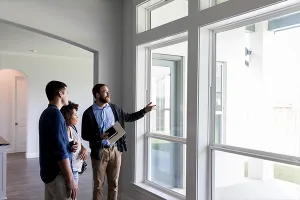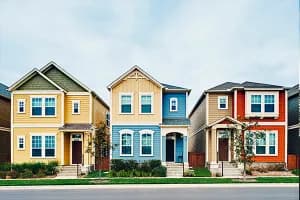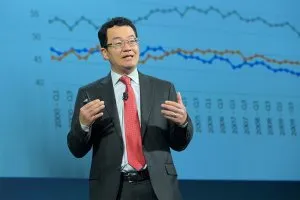Hispanic Americans are not only the largest and fastest-growing minority group in the U.S. but also the fastest-growing demographic of homebuyers in the U.S. Over the past decade, the Hispanic community has been driving homeownership growth faster than any other demographic group. In 2023, although their homeownership rate slightly fell from the year before due to higher mortgage rates, the Hispanic homeownership rate was 5.8% higher than a decade ago. Specifically, the Hispanic homeownership rate rose to 51% in 2023 compared to 45% in 2013.
Some key drivers of this Hispanic homebuying growth are their improved educational attainment, strong presence in the workforce, and fast-rising incomes, which provided the financial foundation for more Hispanic families to enter the housing market.
Educational Attainment
Hispanic Americans have experienced the fastest gains in educational attainment over the past decade, with the number of individuals with a bachelor’s degree or higher nearly doubling. This rapid increase—with more than 2.1 million additional Hispanic Americans achieving higher education degrees—reflects a broader trend of growing emphasis on education within Hispanic communities. Hispanic families and communities are increasingly recognizing the value of higher education in improving economic opportunities. The impact of this education shift is likely to influence various sectors, as a more educated Hispanic population contributes to a more skilled workforce.
Income
With more Hispanic Americans improving their educational attainment and entering the workforce, they are more competitive in the job market and more likely to secure employment in higher-paying fields. Education usually translates directly into better job opportunities, which typically come with higher salaries. In addition, individuals with a degree generally have more opportunities for career advancement, which can also lead to higher income over time. In fact, Hispanic Americans have experienced the largest income gains among any other demographic group, with their income rising by 67 percentage points over the last decade. The relationship between educational attainments, workforce participation, and income forms a chain of positive outcomes that builds on one another.

Hispanic Homeownership Growth in Key States
Texas, Arizona, and New Mexico have high concentrations of Hispanic populations and consistently show strong homeownership rates among Hispanic households. In these states, the Hispanic homeownership rate hovers around 60%, with New Mexico standing out at an even higher rate of 67%. These figures reflect the longstanding presence of Hispanic communities in these areas.
But what’s especially remarkable is the rapid increase in the Hispanic homeownership rate in states with smaller Hispanic populations. South Carolina and Idaho have seen significant growth in Hispanic homeownership rates over the past decade. In 2013, these states had Hispanic homeownership rates below 50%, but their rate is currently near 60%.


Wealth Accumulation Through Homeownership
In the meantime, homeownership has enabled Hispanic families to build wealth over time as home values appreciate. Data shows that Hispanic homeowners have experienced the second-largest wealth gains from homeownership, following Asian households. The typical Hispanic homeowner has accumulated more than $180,000 equity over the past decade solely from home price appreciation. This accumulated wealth represents a substantial asset for future financial stability. The more Hispanic families buy homes, the more they can accumulate wealth that can be passed on to their children. This ability to transfer wealth from generation to generation is a key factor in creating intergenerational wealth. Hispanic homeowners can pass down their properties or use the wealth created by their homes to help the next generation. Thus, this increase in Hispanic homeownership is also a significant driver of intergenerational wealth creation within Hispanic communities.
While Hispanic Americans generally own slightly less expensive homes than their White counterparts with the median home price for Hispanic-owned homes being 1.3% lower, that’s not the case in several states. For instance, in New York, Hispanic homeowners tend to own homes that are significantly more expensive, with a median home price that is 41% higher than that of White homeowners. Specifically, according to the U.S. Census, the median price of homes owned by Hispanic households in New York is $516,300 compared to $366,400 for White homeowners.

The map below shows the wealth Hispanic homeowners have accumulated in the last decade. These homeowners accumulated more than $250,000 in wealth in the last decade in Hawaii ($374,300), California ($303,030), Utah ($284,600), Colorado ($277,170), Washington ($268,870), and Nevada ($250,660).

Ongoing Challenges in Homeownership
Despite these gains, the Hispanic homeownership rate remains significantly lower than the national average. Hispanic Americans face additional barriers to homeownership, making it more challenging for them to buy and maintain homes compared to White Americans.
One major challenge is the issue of cost burden. A higher proportion of Hispanic homeowners are considered cost-burdened, meaning they spend more than 30% of their income on housing costs, including mortgage payments. About 28% of Hispanic homeowners fall into this category, compared to 21% of White homeowners.
The situation is even more difficult for renters—many of whom are potential first-time homebuyers. Less than 20% of Hispanic renter households can afford to purchase a median-priced home in their area, compared to 23% of White renters. This affordability gap is a critical barrier, as it highlights the difficulty Hispanic families face in transitioning from renting to owning a home.
Securing mortgage financing is another significant hurdle. Twenty-five percent of Hispanic mortgage applicants are denied a home loan, compared to only 18% of White applicants. These elevated denial rates suggest fewer can finance their home purchase, which is essential in achieving homeownership.
The Future of Hispanic Homeownership
Despite these challenges, Hispanic homeownership is expected to continue growing in the coming years, driven by demographic trends and increasing economic mobility. The Hispanic population in the U.S. is projected to keep expanding, and with about 30% of Hispanics in the 25-44 age group, many are approaching the prime homebuying age. Over the next five years, approximately 2.2 million Hispanic households are expected to reach the homebuying age.
As more Hispanic Americans achieve homeownership—a key goal for many families—their long-term financial stability and wealth will continue to improve.









